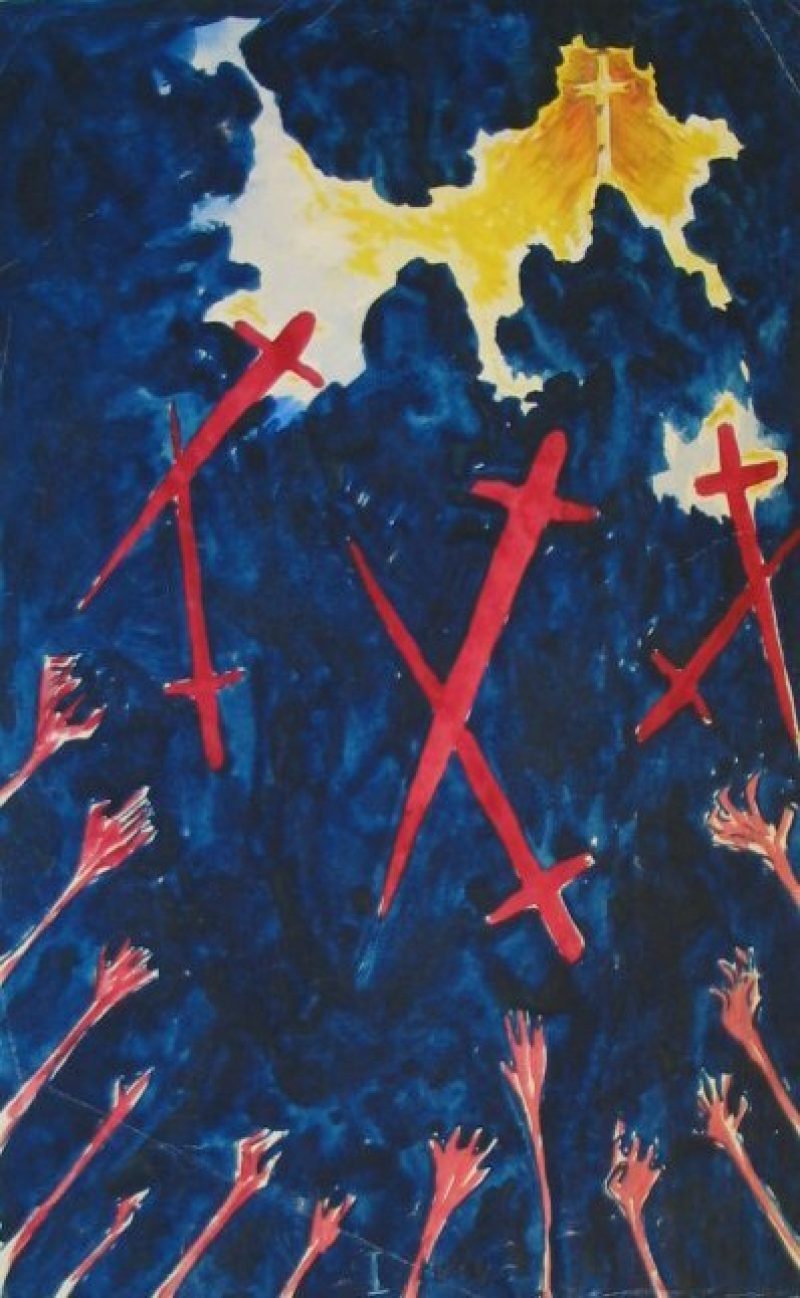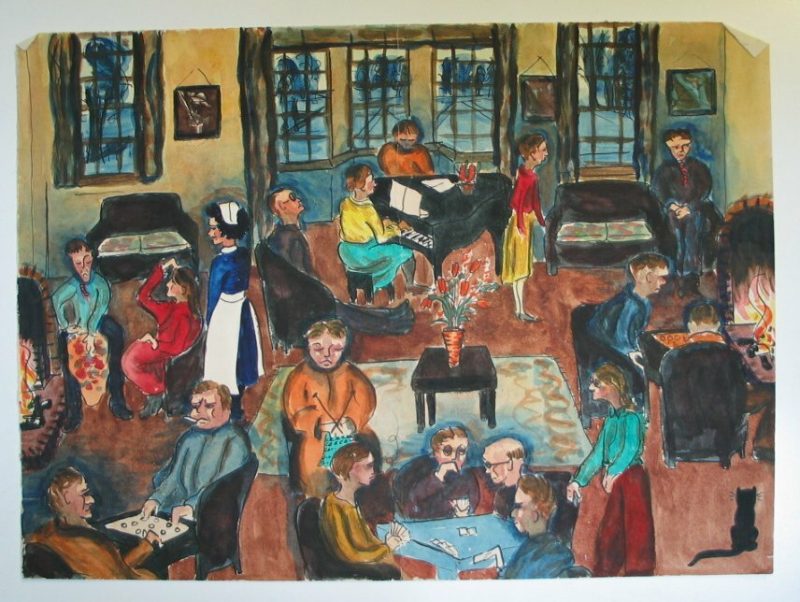Joan Gunther

Joan's own depiction of Bethlem, where she was treated, in 1950
Joan Rosalind Gunther was born in 1917, and spent her early years in Egypt with her parents and brother. She came to England at the age of six and attended school in Tunbridge Wells, and then became a teacher after obtaining a Froebel Child Diploma at Bedford College. After working as a teacher in various private schools she became a Secretary in the Empire Day Movement, a group that celebrated the British Empire on the birthday of Queen Victoria each year.
Joan came to Bethlem Royal Hospital in its current site in Monks Orchard in the spring of 1949. She had previously been in a nursing home in Richmond having become increasingly ‘ecstatic’ in her behaviour. There she had received electro narcosis and electro convulsive therapy, and while this was judged to have helped, she was in the middle of a relapse by the time she got to Bethlem. The notes that survive record her as being in a ‘schizophrenic state’, conducting both sides of a conversation with herself and having religious ‘phantasies’. The Hospital prescribed both electro convulsive and insulin coma therapy, but again this appeared not to have had much effect.

Joan Gunther 1949
The notes that survive come from her time with Dr Warner, who left them to the archive together with a portfolio of artwork. Warner took on Joan’s treatment in autumn 1949 and had determined to use art as part of his therapeutic treatment with her. It seems that Warner encouraged her to create art and discussed it with her at her sessions held 2 to 3 times a week, and then noted down what she told him, leaving us with a unique portfolio of artwork that documents the artist's verbalisations as she produced her work. This is an important collection as it captures Joan's experience not only of her mental health issues, but also of her treatment in psychiatric care in the late 1940s and early 1950s. That Dr Warner kept her artwork suggests that he too recognised its importance and value.
Joan’s art is extraordinarily vibrant and rich, full of vivid colours and shapes. As far as we know she was untrained, and created her work with standard everyday art materials. It sometimes brings to mind 'The Little Traveller' by McGlashan in its imagery, though her work is much more visceral. According to her notes she is often painting concepts or feelings rather than actual ‘real’ events or things, such as her reaction to hearing a Beethoven symphony, or how she is feeling in her situation. Dr Warner also noted that she drew with her left hand in the Hospital (having used her right hand outside) and that she was secretive about her work, and that it usually took a lot of time and effort to get her to open up about what her work showed.
We have not digitised her full portfolio (which is over 50 pictures), but on this page on our blog we have posted up additional photographs and added the captions from her notes to give an impression of the material, and to give the effect of reading the notes while seeing the pictures.

Joan Gunther, c.1949
The notes themselves are a mix of verbatim quotes from Joan and the doctor’s own interjections. Sometimes Joan’s own impressions of the art seem not to be considered, but seem instead like reactions to what she is seeing and discussing with Warner. Sometimes Dr Warner seems to be placing his own views in the notes rather than Joan’s, and it can be quite difficult to tell whose view has been noted down.
Joan clearly found a purpose in her art in Bethlem. In addition to her therapy artwork, toward the end of her time in the Hospital she also created a series of paintings based on images in Edmund Geoffrey O’Donoghue’s ‘The Story of Bethlehem Hospital’ and paintings of everyday hospital life at Monks Orchard. There was a dedicated art studio and occupational therapy unit on site at the Hospital, and its quite possible her work was displayed somewhere around the Hospital.
Joan kept in contact with her doctor after she was discharged in 1950. She even wrote to him in 1952 asking whether she could come back to the Hospital, though this request seems to have been gently rebuffed. She does not seem to have been able to take up work regularly, and her life was tragically cut short by her death in 1959 from nephrosis, a condition she’d been suffering from since the early 1950s.
We are always interested in knowing more about our artists, especially when, as in the case of Joan, all we have is from the records. If you know anything further please do get in touch with us.

A depiction of the Hospital Dayroom by Joan Gunther